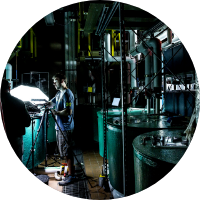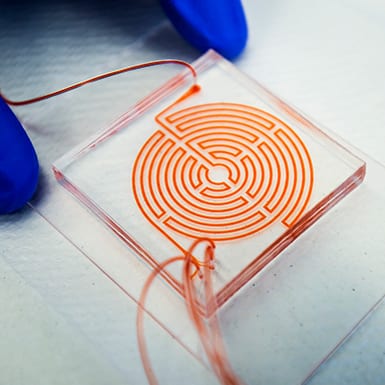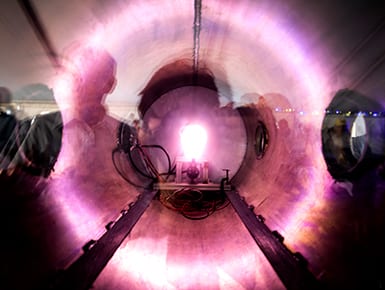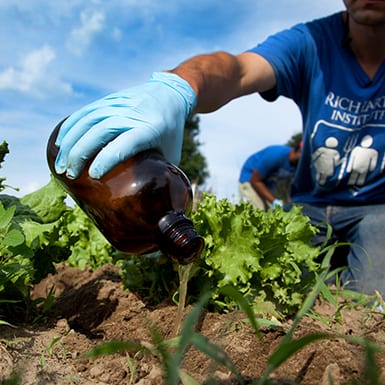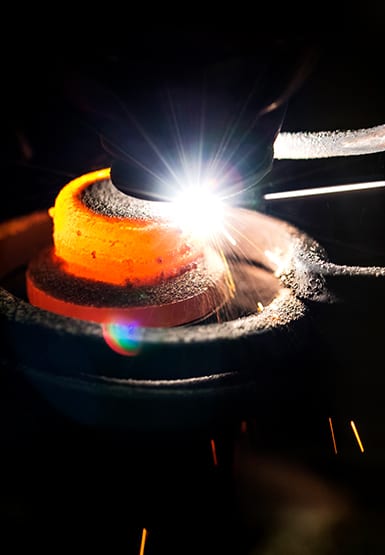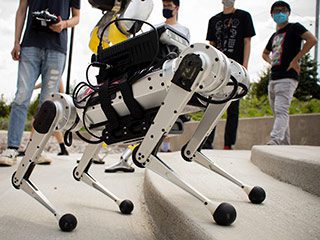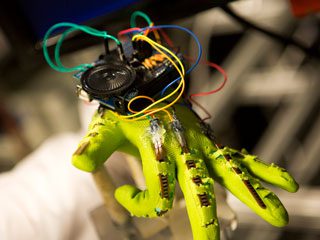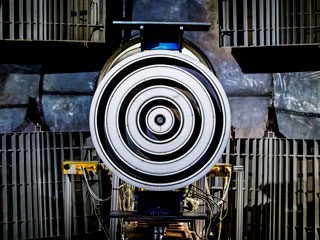Next Evolution of Socialization
Now that virtual work and schooling have become prevalent, what’s the next big draw to keep people online to socialize, too?
Will photo and video sharing naturally develop towards interaction in fully immersive environments? Personal safety and information security regimes will have to develop in tandem with new modes of interactivity, along with plans to provide access to every community as even more transactions move online.
Explore all
U-M and UCR Launch New Alliance to Promote Hydrogen Fuel for Internal Combustion Engine (ICE) Vehicles
U.S. lags behind other countries in support of hydrogen technologies.
The post U-M and UCR Launch New Alliance to Promote Hydrogen Fuel for Internal Combustion Engine (ICE) Vehicles appeared first on Michigan Engineering News.
New water purification technology helps turn seawater into drinking water without tons of chemicals
Cutting acid and base treatments from conventional desalination plants could save billions of dollars globally, making seawater a more affordable option for drinking water.
The post New water purification technology helps turn seawater into drinking water without tons of chemicals appeared first on Michigan Engineering News.
Q&A: Getting serious about atmospheric methane removal
Margaret Wooldridge discusses report from the National Academies, calling for increased research into another greenhouse gas to target for removal.
The post Q&A: Getting serious about atmospheric methane removal appeared first on Michigan Engineering News.
Unlocking ocean power: $3.6M for community-centric wave energy converters
Wave energy could power millions of homes, but to make a splash in the industry, the tech must balance engineering, socio-economic and environmental trade-offs.
The post Unlocking ocean power: $3.6M for community-centric wave energy converters appeared first on Michigan Engineering News.
U-M engineers to partner in new DOE-backed research hub for clean energy storage
Researchers will advance battery technologies going beyond current lithium ion capabilities.
The post U-M engineers to partner in new DOE-backed research hub for clean energy storage appeared first on Michigan Engineering News.
Sea ice’s cooling power is waning faster than its area of extent
A shift in Antarctica’s melting trends and slushy Arctic ice pushes warming from changing sea ice toward the upper limits of climate model estimates.
The post Sea ice’s cooling power is waning faster than its area of extent appeared first on Michigan Engineering News.
Pinpointing coal plants to convert to nuclear energy, considering both practicality and community support
The most comprehensive coal-to-nuclear analysis to date could help policymakers and utilities plan how to meet climate targets.
The post Pinpointing coal plants to convert to nuclear energy, considering both practicality and community support appeared first on Michigan Engineering News.
US public opinion on social media is warming to nuclear energy, but concerns remain
300,000 X posts show 48 of 50 states have a more positive than negative tone about nuclear energy, with a national average at 54% positive.
The post US public opinion on social media is warming to nuclear energy, but concerns remain appeared first on Michigan Engineering News.
Making electric motors more efficient, affordable by 3D-printing magnets
A $2.6M project will fine tune an advanced manufacturing approach that opens doors to more power-dense and sustainable magnetic materials.
The post Making electric motors more efficient, affordable by 3D-printing magnets appeared first on Michigan Engineering News.
Renewable grid: Recovering electricity from heat storage hits 44% efficiency
Thermophotovoltaics developed at U-M can recover significantly more energy stored in heat batteries.
The post Renewable grid: Recovering electricity from heat storage hits 44% efficiency appeared first on Michigan Engineering News.
Costly gas separation may not be needed to recycle CO2 from air and industrial plants
New study offers a pathway for fossil fuel-burning operations to capture emissions.
The post Costly gas separation may not be needed to recycle CO2 from air and industrial plants appeared first on Michigan Engineering News.
Racing hydrogen cars in Detroit
Henderson Academy students used electrolyzers to produce hydrogen gas from water and power miniature fuel cell cars.
The post Racing hydrogen cars in Detroit appeared first on Michigan Engineering News.
Snowfall and drought: $4.8M field campaign will improve forecasts in western US, led by U-M
A mountaintop laboratory and a suite of radar instruments will study winter storms from large-scale cloud movement down to individual snowflakes in an NSF-funded project.
The post Snowfall and drought: $4.8M field campaign will improve forecasts in western US, led by U-M appeared first on Michigan Engineering News.
New reactor could save millions when making ingredients for plastics and rubber from natural gas
With oil production dropping, a process using natural gas is needed to avert a shortage of a workhorse chemical used for automotive parts, cleaning products and more.
The post New reactor could save millions when making ingredients for plastics and rubber from natural gas appeared first on Michigan Engineering News.
Urine-to-fertilizer effort part of NSF Regional Innovation Engine
U-M involved in Great Lakes consortium to support sustainable economic growth
The post Urine-to-fertilizer effort part of NSF Regional Innovation Engine appeared first on Michigan Engineering News.
Bulky additives could make cheaper solar cells last longer
The findings could help engineers methodically find the best molecules to increase the lifespan of perovskite solar cells, rather than relying on time-consuming trial and error.
The post Bulky additives could make cheaper solar cells last longer appeared first on Michigan Engineering News.
New energy
Once derided as “forever 30 years away,” fusion energy has a new swagger. Will it last?
The post New
energy appeared first on Michigan Engineering News.
Green chemistry award: Professor recognized for sustainable silicon metal production method
Richard Laine is the academic category winner in a national EPA contest.
The post Green chemistry award: Professor recognized for sustainable silicon metal production method appeared first on Michigan Engineering News.
Building Flint’s trust in its drinking water
Even with lead service line replacement, the city’s water has issues that require public education.
The post Building Flint’s trust in its drinking water appeared first on Michigan Engineering News.
$3M to boost state-of-the-art solar manufacturing
An effort led by U-M could enable industrial competitors to collectively build a predictive model that speeds the development of advanced solar cells.
The post $3M to boost state-of-the-art solar manufacturing appeared first on Michigan Engineering News.
Simple neural networks outperform the state-of-the-art for controlling robotic prosthetics
And that tracks with the way our motor circuits work—we’re not that complicated.
The post Simple neural networks outperform the state-of-the-art for controlling robotic prosthetics appeared first on Michigan Engineering News.
Reimagining the auto lab
Researchers in the Walter E. Lay Automotive Engineering Laboratory are investigating engine efficiency, alternative and low carbon fuels, connected and autonomous vehicles and vehicle electrification.
The post Reimagining the auto lab appeared first on Michigan Engineering News.
Equity in the energy technology transition is new Institute’s goal
The Institute for Energy Solutions will continue U-M’s 75-year legacy of leadership in energy research.
The post Equity in the energy technology transition is new Institute’s goal appeared first on Michigan Engineering News.
‘I’m supposed to be here’
A Ph.D. student shares his remarkable path from Cuba to chemical engineering at U-M.
The post ‘I’m supposed to be here’ appeared first on Michigan Engineering News.
Demystifying vortex rings in nuclear fusion, supernovae
A mathematical model linking these vortices with more pedestrian types, like smoke rings, could help engineers control their behavior in power generation and more.
The post Demystifying vortex rings in nuclear fusion, supernovae appeared first on Michigan Engineering News.
$1.3M to improve urea fertilizer production and reduce CO2 emissions
Rather than contributing to emissions, the production of an essential fertilizer could consume carbon dioxide, and a U-M team will explore such a method.
The post $1.3M to improve urea fertilizer production and reduce CO2 emissions appeared first on Michigan Engineering News.
$7.5M to advance nuclear energy awarded to U-M
The Department of Energy will support research into faster reactor licensing, just energy transitions, and more.
The post $7.5M to advance nuclear energy awarded to U-M appeared first on Michigan Engineering News.
U-M’s MI-Hydrogen to participate in new Midwest hydrogen hub
The U.S. Department of Energy announced today that the Midwest Alliance for Clean Hydrogen is selected as regional clean hydrogen hub.
The post U-M’s MI-Hydrogen to participate in new Midwest hydrogen hub appeared first on Michigan Engineering News.
$18M to advance materials research for quantum computing, sustainable plastics and more
New center builds a campus-wide ecosystem for designing and manufacturing materials of the future at U-M while training a more representative workforce.
The post $18M to advance materials research for quantum computing, sustainable plastics and more appeared first on Michigan Engineering News.
Toyota Research Institute and Michigan Engineering discuss importance of long-standing partnership
As the auto industry expands beyond transportation, university collaborations are more important than ever.
The post Toyota Research Institute and Michigan Engineering discuss importance of long-standing partnership appeared first on Michigan Engineering News.
Choosing exoskeleton settings like a Pandora radio station
Using a simple and convenient touchscreen interface, the algorithm learns the assistance preferences of the wearer.
The post Choosing exoskeleton settings like a Pandora radio station appeared first on Michigan Engineering News.
Outsmarting floodwaters
The world needs better tools to protect people during floods. A new machine learning method could help.
The post Outsmarting floodwaters appeared first on Michigan Engineering News.
$7.5 million to predict and communicate flood risk
Engineers, atmospheric scientists, psychologists and anthropologists team up to develop better flood predictions and ensure decision-makers can understand them.
The post $7.5 million to predict and communicate flood risk appeared first on Michigan Engineering News.
Wastewater dashboard adds monkeypox, flu and more for five southeast Michigan communities
The results of monitoring for diseases beyond COVID-19 are now publicly available for Ann Arbor, Flint, Jackson, Tecumseh and Ypsilanti.
The post Wastewater dashboard adds monkeypox, flu and more for five southeast Michigan communities appeared first on Michigan Engineering News.
New activity trackers for dolphin conservation
Experiments with custom-made biologging devices offer new insight into dolphin swimming and energy requirements.
The post New activity trackers for dolphin conservation appeared first on Michigan Engineering News.
Understanding a cerium quirk could help advance grid-scale energy storage
It turns out cerium flow batteries lose voltage when electrolyte molecules siphon off energy to form different complexes around the metal.
The post Understanding a cerium quirk could help advance grid-scale energy storage appeared first on Michigan Engineering News.
Third Annual Data Mining Workshop Brings Together 100+ Researchers
100+ researchers from across the University of Michigan and from industry gathered on North Campus for the third U-M Workshop on Data Mining.

Michigan Researchers Win Best Paper Award at VLDB 2015
The paper proposes an interactive natural language interface for relational databases, which enables novice users to construct complex queries.

Censys enables fast searching of actionable internet data
The software enables users to ask questions about the hosts and networks that compose the Internet and get an immediate reply.
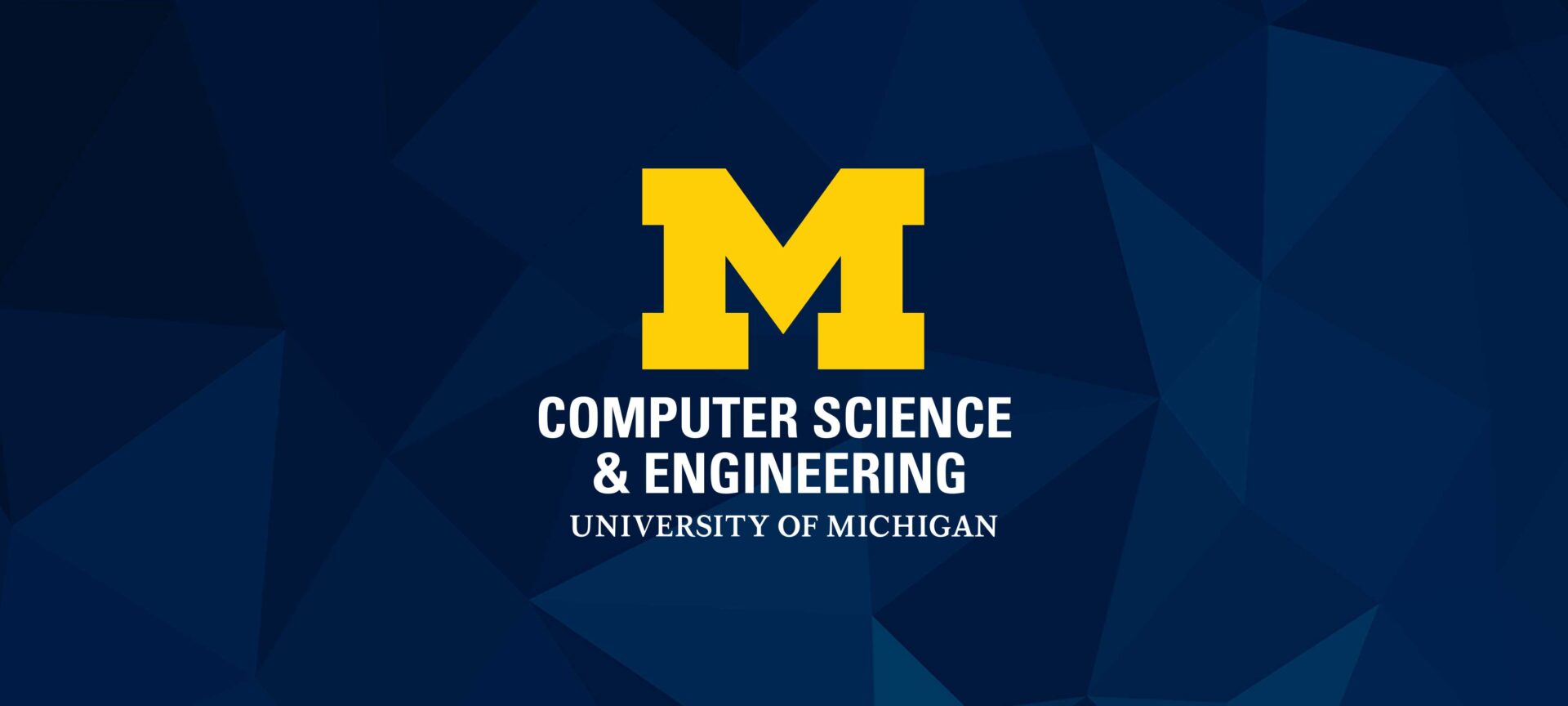
Barzan Mozafari receives NSF CAREER Award to improve predictability of database systems
Prof. Mozafari is passionate about building large-scale data-intensive systems that are more scalable, more robust, and more predictable.
Michael J. Cafarella selected for Sloan Research Fellowship
He has built software systems for information extraction, database integration, and feature engineering and applied these to problems in the social sciences.
Walter Lasecki and collaborators win Best Paper at W4A
The paper explores how automated speech recognition and crowd-sourced human correction and generation of transcripts can be traded off to improve accuracy and latency.
Google, U-M to build digital tools for Flint water crisis
CSE students and faculty will collaborate as a part of a larger team to help respond to the crisis.
Shadows in the Dark Web
Secrets lurk in the dark web, the 95 percent of the internet that most of us can’t see. One U-M professor is bringing some of those secrets to light, making the digital and the real world a little safer.
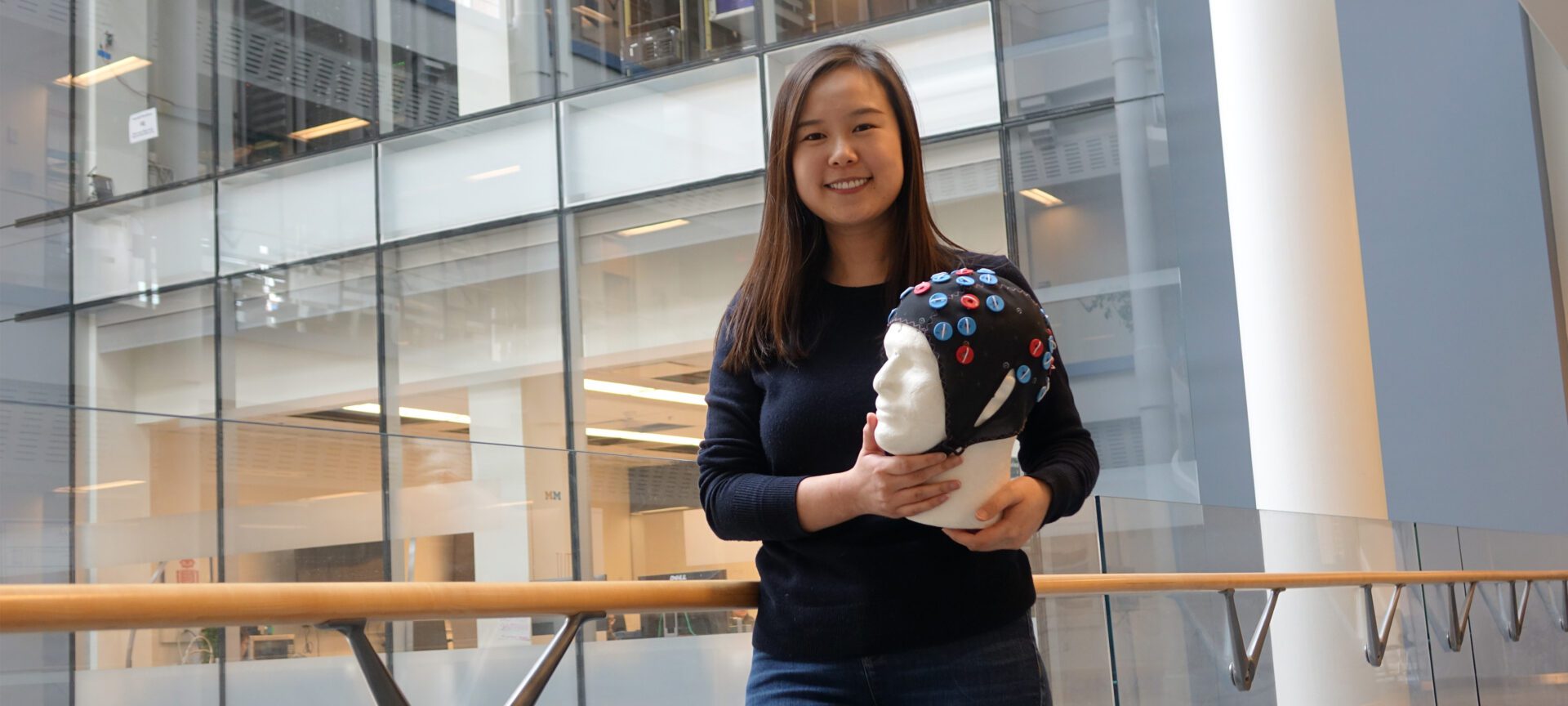
Researchers to use brain scans to understand gender bias in software development
The team will use fMRI to identify some of the underlying processes that occur when a code reviewer weighs in on a piece of software and its author.

Open-source software helps youth with disabilities develop scheduling independence
The system can add more flexibility to task management apps to help learning users make informed decisions about their time.
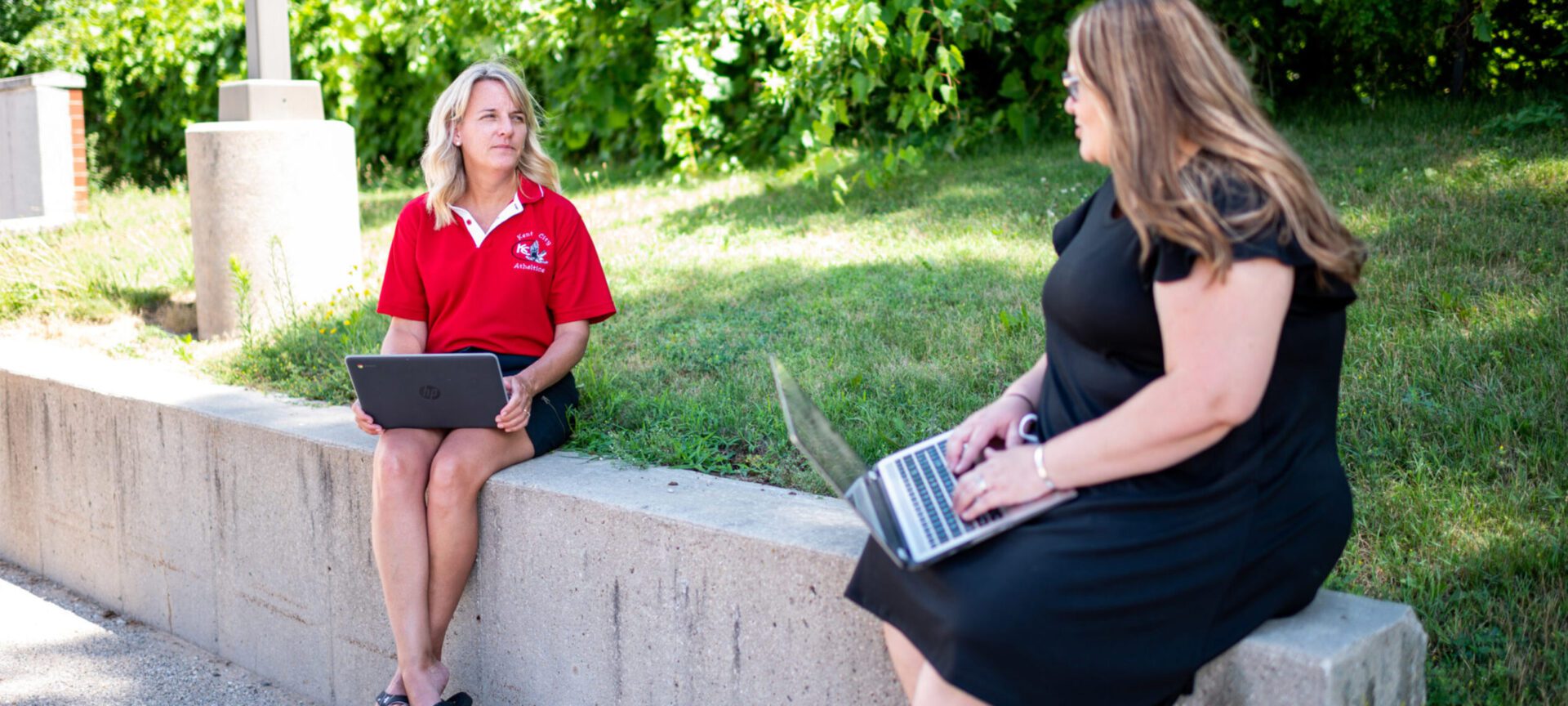
Roadmap for teachers: U-M free online learning platform paves the way
K-5 teachers and students throughout Michigan are building thriving learning communities online by using free deeply-digital, standards-aligned curricula and platform developed by the U-M Center for Digital Curricula.
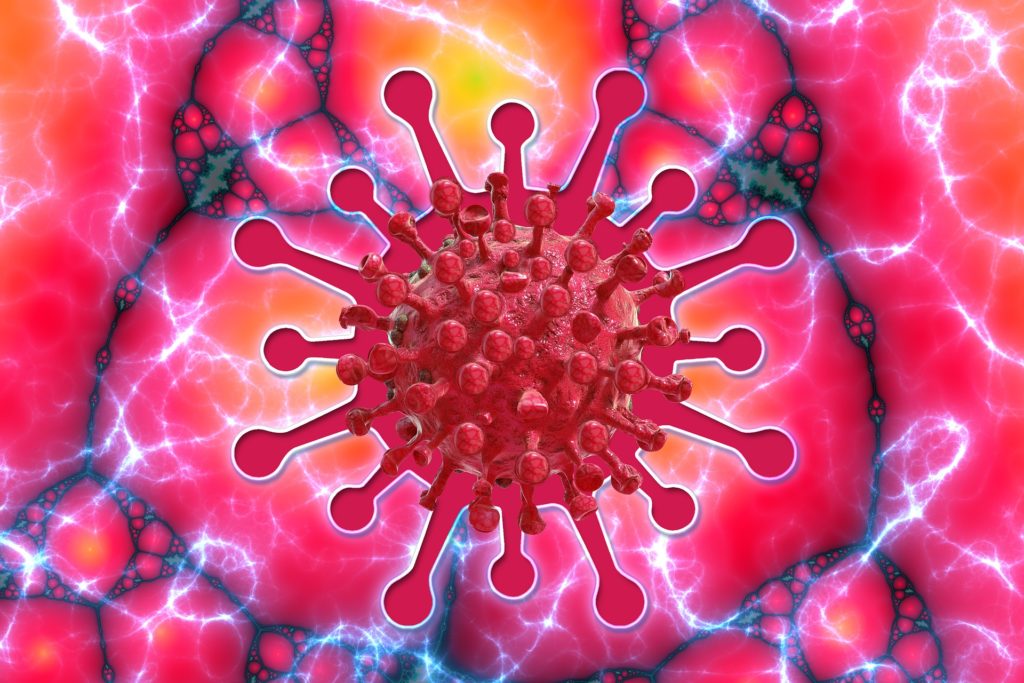
Computer scientists employ AI to help address COVID-19 challenges
Five multidisciplinary research teams are working on projects to assist with the coronavirus outbreak and to help find solutions to pressing problems.
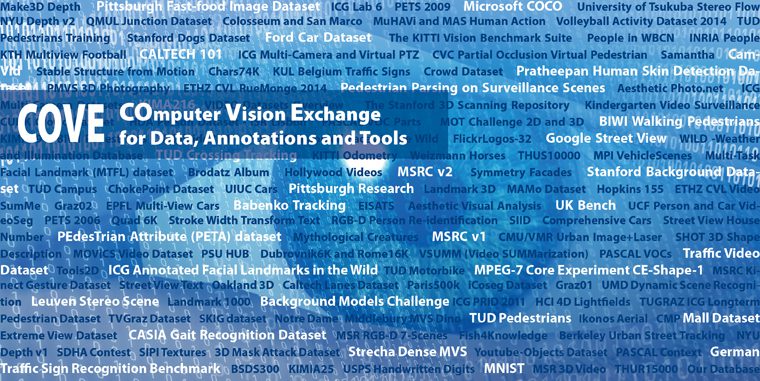
COVE: a tool for advancing progress in computer vision
Centralizing available data in the intelligent systems community through a COmputer Vision Exchange for Data, Annotations and Tools, called COVE.
Big data, small footprint
How changing the rules of computing could lighten Big Data’s impact on the internet.
The post Big data, small footprint appeared first on Michigan Engineering News.
Batteryless next-generation cellular devices could empower a more sustainable future
PhD student Trevor Odelberg is looking to enable long range, highly reliable, and low-power cellular IoT devices that one day can run entirely on harvested energy, reducing battery waste and empowering devices to last for decades.
The post Batteryless next-generation cellular devices could empower a more sustainable future appeared first on Michigan Engineering News.
Urban solar energy: Solar panels for windows hit record 8% efficiency
Transparent solar panels on windows could take a bite out of a building’s electricity needs.
The post Urban solar energy: Solar panels for windows hit record 8% efficiency appeared first on Michigan Engineering News.
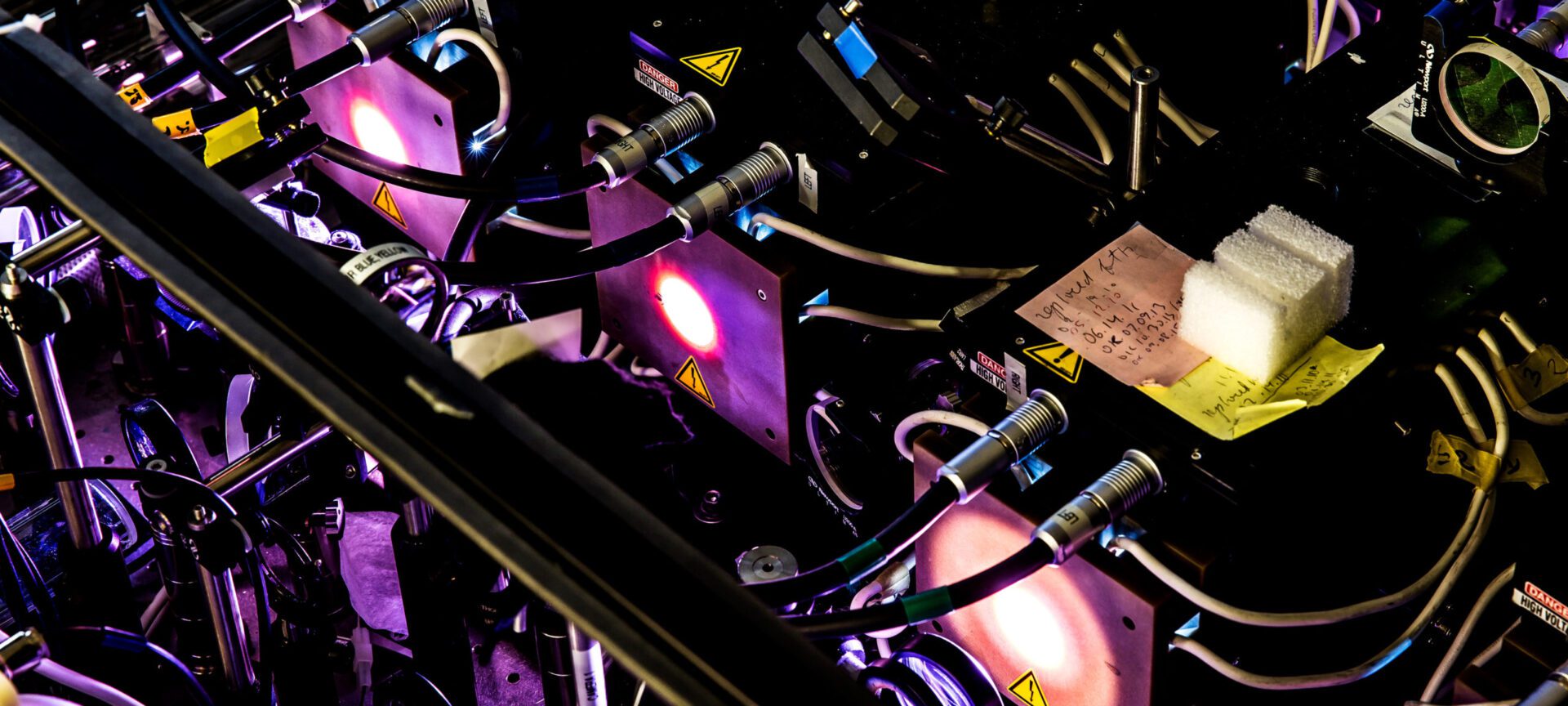
Coordination and collaboration are critical to U.S. leadership in plasma science: a Q&A with the Plasma 2020 Decadal Study co-chair
Plasma science has the potential to speed advances in medicine, energy, electronics and more—including helping us deal with pandemics.
Spray-on coating could make solar panels snow-resistant
Cold-weather-friendly formula foils snow/ice accumulation in Alaska test.
The post Spray-on coating could make solar panels snow-resistant appeared first on Michigan Engineering News.
Honoring the past and sizing up nuclear’s future at the Phoenix rededication
The Michigan Memorial Phoenix Project, conceived as a war memorial following World War II, remains relevant in the face of climate change and international conflict.
The post Honoring the past and sizing up nuclear’s future at the Phoenix rededication appeared first on Michigan Engineering News.
How air conditioners could advance a renewable power grid
In an approach that won’t disrupt consumers, researchers will tackle two of the biggest issues in the energy industry.
The post How air conditioners could advance a renewable power grid appeared first on Michigan Engineering News.
Russel Lecture: Fighting climate change with organic electronics
The researcher-entrepreneur who helped bring OLED displays to the masses envisions a future of efficient lighting and next-gen solar power.
The post Russel Lecture: Fighting climate change with organic electronics appeared first on Michigan Engineering News.
U-M, community partners tackle energy insecurity in three Detroit neighborhoods
Johanna Mathieu is one of four principal investigators on a project to improve home energy efficiency and to lower monthly utility bills.
The post U-M, community partners tackle energy insecurity in three Detroit neighborhoods appeared first on Michigan Engineering News.
Computer vision: Finding the best teaching frame in a video for fake video fightback
The frame in which a human marks out the boundaries of an object makes a huge difference in how well AI software can identify that object through the rest of the video.
The post Computer vision: Finding the best teaching frame in a video for fake video fightback appeared first on Michigan Engineering News.
$5M to enable remote, next-generation autonomous vehicle testing at Mcity
‘Mcity 2.0’ will give researchers, many without testing resources, remote access to the Mcity Test Facility—creating a more equitable playing field in mobility.
The post $5M to enable remote, next-generation autonomous vehicle testing at Mcity appeared first on Michigan Engineering News.
COVID-19 is laying waste to many US recycling programs
‘The trends we see in the making and consuming of single-use goods, particularly plastic, could have lasting negative effects on the circular economy.’
The post COVID-19 is laying waste to many US recycling programs appeared first on Michigan Engineering News.
Mirror-like photovoltaics get more electricity out of heat
By reflecting nearly all the light they can’t turn into electricity, they help pave the way for storing renewable energy as heat.
The post Mirror-like photovoltaics get more electricity out of heat appeared first on Michigan Engineering News.
1,000-cycle lithium-sulfur battery could quintuple electric vehicle ranges
The nanofibers recycled from Kevlar vests are harnessed in a biomimetic design to help solve a battery’s longevity problem.
The post 1,000-cycle lithium-sulfur battery could quintuple electric vehicle ranges appeared first on Michigan Engineering News.
‘Peecycling’ payoff: Urine diversion shows multiple environmental benefits when used at city scale
New study is the first in-depth analysis of the environmental performance and benefits of large-scale urine recycling relative to conventional wastewater treatment and fertilizer production.
The post ‘Peecycling’ payoff: Urine diversion shows multiple environmental benefits when used at city scale appeared first on Michigan Engineering News.
Wastewater treatment at one-third the size and cost
Systems featuring a ‘membrane-aerated biofilm reactor’ can also remove more nitrogen from treatment plant discharges.
The post Wastewater treatment at one-third the size and cost appeared first on Michigan Engineering News.
Bendable concrete and other CO2-infused cement mixes could dramatically cut global emissions
In The Conversation, experts break down what’s needed to make CO2 in concrete work on a wide scale to curb global emissions.
The post Bendable concrete and other CO2-infused cement mixes could dramatically cut global emissions appeared first on Michigan Engineering News.
Bipartisan infrastructure bill signed into law: Engineers weigh in
Two experts say the new law could correct historical infrastructure disparities.
The post Bipartisan infrastructure bill signed into law: Engineers weigh in appeared first on Michigan Engineering News.
Q&A with Henry Liu, Mcity’s new director
University of Michigan’s mobility research center has been realigned under Michigan Engineering.
The post Q&A with Henry Liu, Mcity’s new director appeared first on Michigan Engineering News.
Spotlight: Data is life
Take a multimedia trip to the Amazon and meet the researchers who are working to understand how the future of the rainforest could affect us all.
The post Spotlight: Data is life appeared first on Engineering Research News.
North American cold-climate forests are already absorbing less carbon, study shows
By zeroing in on different high-latitude regions around the globe, researchers reveal what global averages mask.
The post North American cold-climate forests are already absorbing less carbon, study shows appeared first on Michigan Engineering News.
‘Doomsday Glacier’ may be more stable than initially feared
Study sheds light on the future of the massive Thwaites Glacier.
The post ‘Doomsday Glacier’ may be more stable than initially feared appeared first on Michigan Engineering News.
The ocean is full of tiny plastic particles – we found a way to track them with satellites
In The Conversation, Chris Ruf explains how CYGNSS can find the source ocean microplastics and aid in future clean up.
The post The ocean is full of tiny plastic particles – we found a way to track them with satellites appeared first on Michigan Engineering News.
Opinion: After a summer of weather horrors, adapting to climate change is an imperative
In a perspective piece for Washington Post, Richard Rood says response to climate change requires an adaption mindset in addition to mitigation efforts.
The post Opinion: After a summer of weather horrors, adapting to climate change is an imperative appeared first on Michigan Engineering News.
Longer, more intense allergy seasons could result from climate change
Rising temperatures, increased CO2 will drive trees, grasses, weeds to produce more pollen.
The post Longer, more intense allergy seasons could result from climate change appeared first on Michigan Engineering News.
Flaring allows more methane into the atmosphere than we thought
The upside is that simple fixes will have a big impact
The post Flaring allows more methane into the atmosphere than we thought appeared first on Michigan Engineering News.
In the news: Michigan Engineering experts June 21-25
Highlights include Vox and the New York Times.
The post In the news: Michigan Engineering experts June 21-25 appeared first on Michigan Engineering News.
$2M to replace fossil fuels with solar power in fertilizer production
The new approach could enable farmers to produce ammonia on-site, and also reduce CO2 emissions from fertilizer production.
The post $2M to replace fossil fuels with solar power in fertilizer production appeared first on Michigan Engineering News.
$3.4M to turn up the heat at solar-thermal plants
Improved heat-trapping materials for solar thermal energy could help the U.S. meet its goal of cutting solar energy costs in half by 2030.
The post $3.4M to turn up the heat at solar-thermal plants appeared first on Michigan Engineering News.
New approach reduces EV battery testing time by 75%
System developed at the University of Michigan saves time and money in the race to create better batteries for the electric vehicle revolution
The post New approach reduces EV battery testing time by 75% appeared first on Michigan Engineering News.
Carbon capture, utilization and storage roadmap reveals technologies that are ready to go
Concrete and construction aggregates could be carbon negative and dollar positive while sustainable aviation fuel and methanol could also turn a profit.
The post Carbon capture, utilization and storage roadmap reveals technologies that are ready to go appeared first on Michigan Engineering News.
Tracking ocean microplastics from space
Satellites give new insights on the Great Pacific Garbage Patch, plus sources and flows of ocean microplastic.
The post Tracking ocean microplastics from space appeared first on Michigan Engineering News.
Treating PFAS water contamination with cold plasma
University of Michigan researchers are developing better plasma technology that can destroy PFAS compounds
The post Treating PFAS water contamination with cold plasma appeared first on Michigan Engineering News.
Biden’s climate pledge: Engineers offer insights
Experts on electric vehicles, carbon capture and sequestration, and nuclear energy weigh in.
The post Biden’s climate pledge: Engineers offer insights appeared first on Michigan Engineering News.
Strong magnetic fields change how friction works in plasma
Rather than just slowing down a charged particle moving through a plasma, friction can also push from the side in a strong magnetic field.
The post Strong magnetic fields change how friction works in plasma appeared first on Michigan Engineering News.
Key takeaways from the COP26 Summit
Three Michigan Engineering experts offer insights following the summit in Glasgow.
The post Key takeaways from the COP26 Summit appeared first on Michigan Engineering News.
Nuclear “shadow corrosion” reproduced in the lab, paving way to longer fuel life
Now that it’s understood, researchers are on their way to preventing this type of degradation in nuclear power plants.
The post Nuclear “shadow corrosion” reproduced in the lab, paving way to longer fuel life appeared first on Michigan Engineering News.
$5.1M to advance nuclear energy awarded to U-M
The Department of Energy will support research into better heat exchangers as well as improved predictions for neutron physics and radiation damage.
The post $5.1M to advance nuclear energy awarded to U-M appeared first on Michigan Engineering News.
Land use matters as communities cut carbon emissions
Communities will have varied tolerances for the acreage occupied by renewables. A new study quantifies the land needed for different options.
The post Land use matters as communities cut carbon emissions appeared first on Michigan Engineering News.
Wastewater to drinking water: EPA grants $1.2M to U-M for virus removal study
In preparation for climate adaptation in water-stressed areas, researchers will assess how well existing treatment systems prepare water for reuse.
The post Wastewater to drinking water: EPA grants $1.2M to U-M for virus removal study appeared first on Michigan Engineering News.
University of Michigan partners on multi-institution planning effort for state’s water future
Work for the Michigan Department of Environment, Great Lakes and Energy will develop a policy roadmap to safe, low cost water services.
The post University of Michigan partners on multi-institution planning effort for state’s water future appeared first on Michigan Engineering News.
Photosynthesis copycat may improve solar cells
The new approach moves energy efficiently and could reduce energy losses converting light into electricity.
The post Photosynthesis copycat may improve solar cells appeared first on Michigan Engineering News.
 Michigan Engineering | University of Michigan
Michigan Engineering | University of Michigan 
